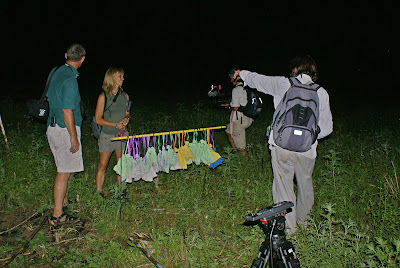by Andy Ruffle
We've been receiving sightings of mass gatherings of Yellow-billed Kites along the lower South Coast.
Mike Fagan reported seeing a flock of some 12 birds over Sunwich Port over a week ago.
A similar sized flock was also reported by Hazel van Rooyen over Sea Park, which may well have been the same sighting as Mike.
I then received a phonecall on Monday from a gentleman in Southbroom who was witnessing 37 YBKs circling over the lagoon at about 200ft.
The most likely explanation for this behaviour is a mass of insect prey.
The YBK Milvus parasitus is usually solitary or in pairs. It is an agile hunter and often takes small birds, so there is also the possibilty that the swallows in the area may have attracked these birds, but this is less likely.
The other explanation could be that the birds are assembling ready for migration. However, YBKs usually only leave in March when the rains finish, so this seems rather premature, but cannot be ruled out.
Reports of any other sightings would be most welcome, as would photos of these events.
References: Roberts Online; David Allan (Curator of Birds, Durban Museum)


























